Pigeons, while often considered innocent and charming creatures, can become quite a nuisance when they invade our personal spaces. They are notorious for causing damage to buildings, leaving behind unsightly droppings, and even posing health risks due to the multitude of diseases that they can carry. Therefore, trapping pigeons becomes a necessary measure to control their population and prevent further damage.
By trapping pigeons, we take proactive steps towards the pigeon population and maintaining a clean and safe environment for ourselves and our communities. This not only protects our property but also ensures the well-being of other wildlife species that might be affected by the excessive presence of pigeons.
Benefits of trapping pigeons
Trapping pigeons offers numerous benefits that go beyond simply removing pesky birds from your surroundings. Firstly, it helps prevent structural damage caused by their nesting activities and corrosive droppings which can deteriorate rooftops, ledges, and other surfaces over time.
Additionally, trapping reduces the risk of diseases transmitted through pigeon droppings such carry diseases such as histoplasmosis or respiratory infections. Moreover, trapping provides an opportunity for humane pigeon removal.
Instead of resorting to harmful methods or toxic chemicals that can harm other animals or pollute the environment, using traps ensures a more sustainable and ethical approach towards solving the pigeon problem. Furthermore, successfully trapping multiple pigeons will discourage others from loitering around your property since pigeons are highly social animals; seeing their fellow companions caught may make them wary about returning to the same spot again.
By actively managing pigeon populations through traps in conjunction with preventive measures like sealing off access points or using scare tactics, you can effectively keep these feathered intruders at bay while promoting a cleaner living environment. So let’s delve into the world of pigeon trapping methods and techniques to tackle the challenge of dealing with these persistent avian visitors.
Understanding Pigeon Behavior

Pigeons, scientifically known as Columba livia, are fascinating creatures that exhibit various habits and behaviors. There are several species of pigeons, but the most commonly encountered in urban areas is the feral pigeon or rock pigeon.
These adaptable birds have a remarkable ability to thrive in different environments, making them a common sight in cities worldwide. Feral pigeons primarily live in close association with human populations.
They have adapted to urban life and often build their nests on buildings, bridges, or other structures that resemble natural cliff ledges. These resourceful birds can also be found roosting in trees or under bridges.
Nesting and Roosting Patterns
Understanding pigeon nesting and roosting patterns is crucial when it comes to trapping them effectively. Pigeons build their nests using twigs, leaves, grass, and other available materials.
They prefer nesting sites that have large cages that provide shelter from the elements and protection from predators. Roosting is another common behavior among pigeons.
Roosts are areas where pigeons gather together for resting or sleeping purposes. These roosting sites are often characterized by large numbers of pigeons congregating on ledges or rooftops.
Feeding Preferences
Pigeons have a diverse diet but primarily feed on grains such as bird seeds, corn, and various types of vegetation such as insects well as fruits and vegetables. They are opportunistic feeders that scavenge for food from human sources like garbage cans or outdoor dining areas.
Understanding what pigeons eat can help you effectively lure them into traps during the trapping process. Pre-baiting the area around the trap with their preferred food source can significantly increase the chances of successfully capturing them.
By comprehending these aspects of pigeon behavior – their diverse species, nesting and roosting patterns, and feeding preferences – you gain valuable insights that can aid in creating a successful pigeon trapping strategy. Armed with this knowledge, we can now delve into choosing the right trap to effectively attract and catch these urban avian dwellers.
Choosing the Right Trap
When it comes to trapping pigeons, selecting the right type of how to trap pigeons is essential. There are several options available, each with its own advantages and considerations. Let’s take a closer look at three popular types of pigeon traps: live traps, funnel traps, and drop traps.
Live Traps: Capturing Pigeons Humanely
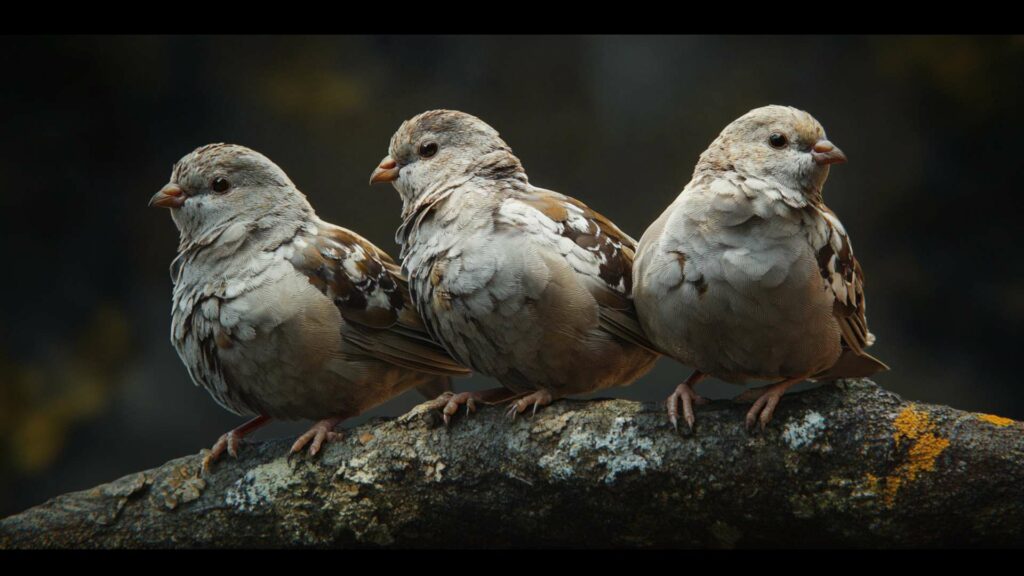
Live traps are an excellent choice for those who want to capture pigeons without causing harm. These traps typically consist of a cage with one or more entry points that allow the birds to enter freely but prevent them from escaping. Live trapping is particularly useful in urban areas where other methods might be impractical or unsafe.
To attract pigeons into these traps, placing food inside can be highly effective. Bird seed or corn inside the trap acts as bait that lures unsuspecting pigeons in.
Funnel Traps: Channeling Pigeons Towards Capture
Funnel traps are designed to guide pigeons into a confined space from which they cannot escape easily. These traps work by creating a narrow entrance door that widens towards the baited area, leading the birds into an enclosure where they can be caught.
The advantage of funnel traps is their ability to catch multiple pigeons at once since they rely on attracting an entire flock rather than individual birds. Placing bait such as food or birdseed in the wider section of the funnel ensures that other pigeons also are enticed further inside.
Drop Traps: A Swift Solution for Quick Capture
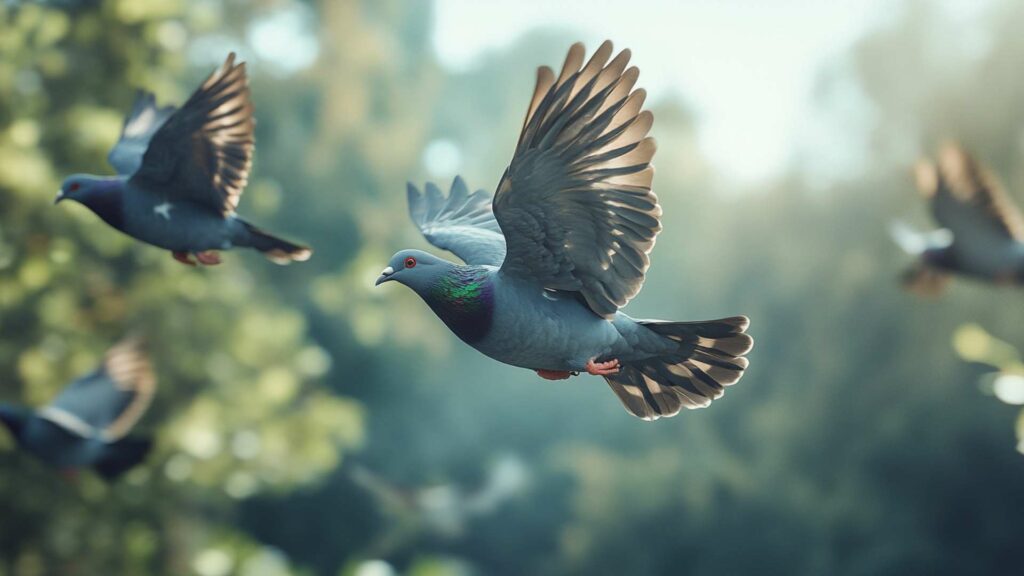
Drop traps offer a quick and efficient method for capturing single pigeons without risking injury to other birds or humans involved in trapping them. This type of trap consists of a platform supported by hinges that can be triggered remotely or manually to close quickly when the first pigeon ever steps onto it.
Drop traps are particularly useful when targeting specific nuisance pigeons or when other trapping methods prove ineffective. Placing food as bait on the trap ensures that the pigeon will be enticed to step onto it, triggering its closure and securing a successful capture.
By understanding these different types of pigeon traps, you can choose the most appropriate one for your specific needs and circumstances. Whether you opt for live traps to capture pigeons humanely, funnel traps to catch entire flocks at once, or drop traps for swift individual captures, having the right equipment will increase your chances of success in dealing with a pigeon problem in your desired location.
Preparing the Trap Location
Pigeons, with their knack for finding food sources and comfortable roosting spots, tend to congregate in specific areas. To effectively set the trap for them, it’s crucial to identify these high-activity zones.
Look out for signs such as large numbers of pigeons gathering on rooftops, ledges, or trees. Pigeons are attracted to places where they can find easy access to food and water sources, so keep an eye on locations near restaurants, parks with open-air dining areas, or even dumpster sites.
Clearing the area for effective trapping
Now that you’ve pinpointed the hotspots of pigeon activity, it’s time to prepare the trap location. Start by removing any obstacles or debris that might obstruct the placement of your pigeon traps. Pigeons need a clear path to enter and exit the trap smoothly.
Trim any overgrown branches or foliage that could interfere with their movement around the traps. Additionally, ensure that there are no alternative roosting options in close proximity to your traps.
Pigeons are smart creatures and will avoid areas where they don’t feel safe. By eliminating other potential roosting or feeding spots nearby (such as uncovered ledges or unsealed attics), you increase the chances of them seeking shelter in your trap instead.
Remember to consider factors like nearby power lines or electric tracks when choosing an appropriate location for your live pigeon traps. These safety concerns are not only important for humans but also ensure a humane approach when dealing with pigeons and other animals in urban environments.
With careful attention to identifying active pigeon areas and clearing those spots effectively, you’re setting yourself up for success when it comes time to start trapping these pesky birds.
Baiting Techniques for Pigeon Traps
Subtly enticing these feathered creatures into your pigeon trap requires a well-thought-out bait strategy. Pigeons are notorious for their indiscriminate eating habits, but certain types of bait have proven to be particularly tempting to them. Let’s explore some tried and tested options:
Grains and Seeds
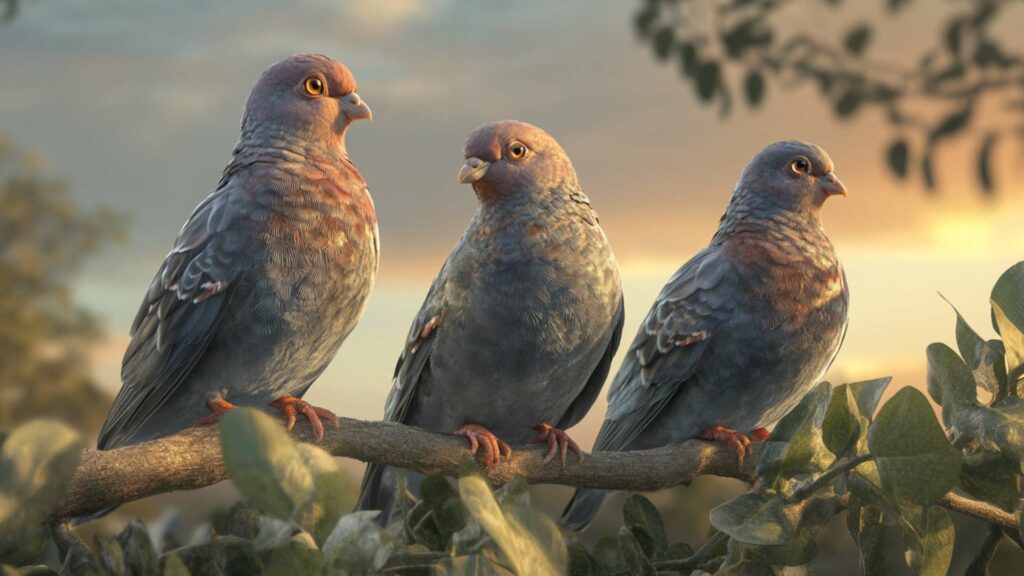
Grains and seeds are like a gourmet feast for pigeons, satisfying both their palates and dietary needs. A mix of cracked corn, bird seed, or millet makes an excellent choice when it comes to attracting these feathered food enthusiasts. Scatter the grains around the trap area, leading pigeons towards a tantalizing meal behind closed doors.
Fruit and Vegetables

Just like humans, pigeons appreciate the juicy goodness of fresh fruits and vegetables. Offer them a buffet that includes sliced apples, grapes, or even leafy greens like lettuce or spinach. The vibrant colors and succulent textures will surely catch their attention, enticing them to venture closer to your pigeon trap.
Commercial Pigeon Baits
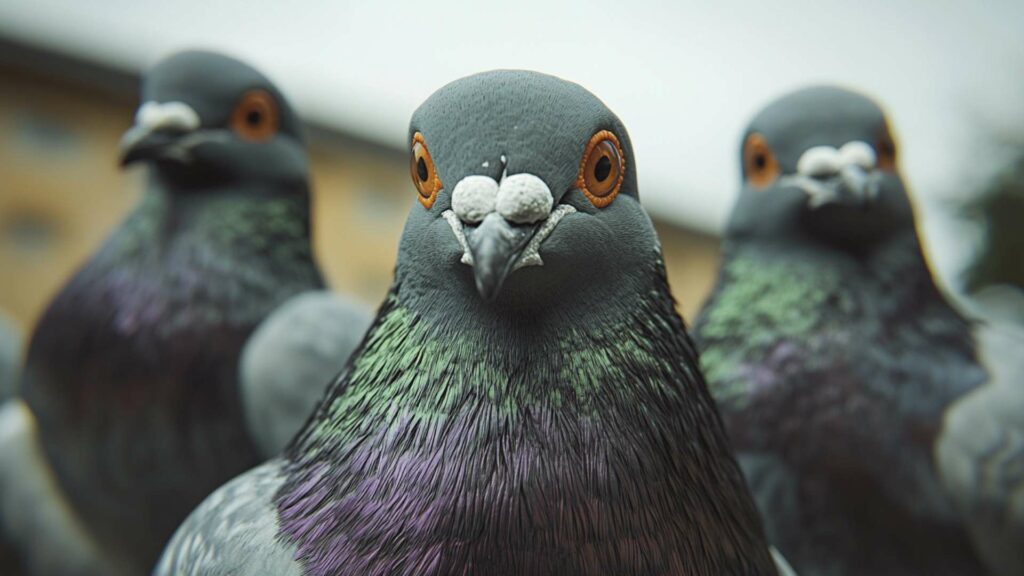
If you want to take your pigeon trapping game to the next level, consider utilizing specially formulated commercial pigeon baits. These products are designed with alluring scent profiles that irresistibly draw in these social birds. Look for baits containing ingredients such as sunflower seeds or dried peas – they tend to be particularly effective at capturing pigeons.
By using grains and seeds, fresh produce, or commercial baits as lures in your pigeon trap setup, you increase your chances of effectively tackling your pesky pigeon problem head-on. Remember: patience is key; it may take a few tries before you successfully attract these city-dwelling birds into your trap.
Stay vigilant, and soon enough, you’ll be well on your way to outsmarting the pigeons that have been causing you headaches. Stay tuned for our next section on “Setting Up the Trap” – where we dive into the intricate details of proper trap placement and ensuring a secure setup to maximize your pigeon trapping success.
Setting Up the Trap
When it comes to trapping pigeons, proper placement of the trap is key. You want to position it in an area where pigeons are frequently seen or where their activity is high. Look for signs such as pigeon droppings, feathers, or nests.
Pigeons tend to gather near food sources, so areas around buildings with accessible food waste or open garbage bins are prime spots. Additionally, consider placing the trap in locations where birds feel safe and comfortable approaching.
Pigeons like open spaces without obstructions that could startle them. To ensure a successful catch, choose an area that provides clear visibility for the birds and allows them to approach the trap without feeling threatened.
Ensuring Trap Stability and Security
To effectively trap pigeons, you must ensure that your setup is stable and secure. A wobbly or flimsy trap may scare off wary birds or even allow them to escape once caught. Begin by selecting a sturdy and durable pigeon trap that can withstand weather conditions and potential bird resistance.
When placing the trap on any surface, make sure it is level and secure. Avoid uneven ground or shaky structures that might compromise its stability.
If necessary, use bricks or heavy objects as weights around the base of the trap to prevent movement. Additionally, consider adding extra security measures like bird netting around your trapping area to discourage other animals, or live birds from interfering with your efforts.
This will help prevent dogs or other curious critters from accidentally triggering the traps before you have a chance to catch those pesky pigeons. By carefully following these steps during setup, you’ll increase your chances of successfully catching those bothersome pigeons while ensuring that they remain safely trapped until you’re ready for their removal.
Monitoring and Maintaining the Trap

Once you have set up your pigeon trap in a strategic location, it’s crucial to exercise patience and diligence in regularly monitoring it for any signs of success. Remember, trapping pigeons is not an instant process but rather an exercise in persistence. These pesky pigeons may take some time to fall into your trap, but with perseverance, you will surely achieve your goal.
Make it a habit to check the trap at least once or twice a day. Pigeons are social birds that tend to flock together, so if one bird has been caught, there’s a good chance that more birds might join them soon.
Approach the trap cautiously as sudden movements might scare away other potential captives. Take this opportunity to marvel at these fascinating creatures up close while ensuring their well-being.
Nourishing the Trapped Birds: Providing Food, Water, and Shelter
As responsible trappers, we have a duty to ensure that trapped pigeons are cared for while they await their release or removal. Just like humans, these birds require sustenance and shelter during their time within the confines of our traps. By providing them with food and water, we can maintain their health until they find themselves once again soaring through open skies.
Consider placing dishes filled with grains such as corn or specialized pigeon feed inside the trap. Pigeons roost primarily on buildings where they have easy access to food sources like discarded scraps or grain spills; replicating this environment can help reduce stress on trapped birds.
Ensure there is also a source of clean water nearby as hydration is essential for their well-being. To create a more comfortable atmosphere for these temporarily imprisoned creatures, add some natural materials such as twigs or leaves inside the trap.
This will give them a sense of security and mimic their natural roosting environment. Remember, the goal is not to harm or exploit these birds but rather to address the pigeon problem in a humane and compassionate manner.
Monitoring and maintaining a pigeon trap requires patience and empathy. Regularly checking the trap for captured pigeons allows you to assess your progress while ensuring that additional pigeons are not left trapped for extended periods.
By providing food, water, and shelter within the trap, you take on the responsibility of caring for these birds during their temporary stay. The ultimate goal is to address the pigeon problem effectively while treating these creatures with kindness and respect throughout the entire trapping process.
Releasing or Removing Captured Pigeons
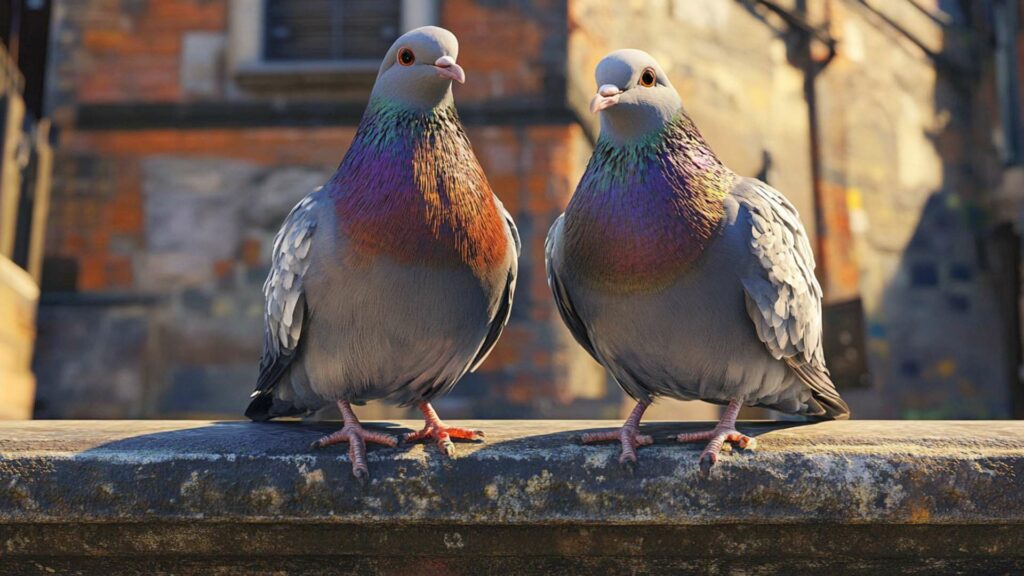
Once you’ve successfully trapped a pigeon, it’s important to handle it with care when releasing it back into the wild. Pigeons are delicate creatures, and improper handling can cause them unnecessary stress or physical harm. Before releasing a trapped pigeon, make sure you’re wearing gloves to protect yourself from any potential diseases that pigeons may carry.
To release a pigeon safely, find a cage in an open area away from busy roads or areas with heavy human activity. Slowly approach the trap and gently open the door or remove any barriers preventing the bird’s flight.
Avoid sudden movements and loud noises that could startle the pigeon as you don’t want to cause unnecessary distress. Remember that pigeons are wild animals, so be patient and allow them time to fly away on their own terms.
Observe from a distance as they regain their bearings and take flight. It’s essential to give these birds their freedom back in a calm and stress-free manner.
Contacting local authorities or professionals for removal if necessary
In some cases, removing captured pigeons on your own might not be feasible or advisable. If you’re dealing with a large infestation of pigeons or encounter any difficulties during the trapping process, it’s best to contact local authorities or professionals who specialize in bird removal. Local animal control agencies or pest control companies are equipped with the knowledge and tools to handle such situations safely and effectively.
They have experience in dealing with urban environments where most birds feel safe roosting and may provide additional advice on preventing future infestations. It’s always better to seek professional help when dealing with persistent pigeon problems rather than risking harm to yourself, other animals, or causing damage to property.
Professionals will evaluate your situation thoroughly before devising an appropriate plan of action to tackle the issue without causing unnecessary harm to the birds or their habitat. Remember, while trapping pigeons yourself can be a viable solution, there are times when it’s best to leave it to the experts who have a deeper understanding of pigeon behavior and effective removal techniques.
Preventive Measures to Deter Future Pigeon Infestations
Pigeons are persistent creatures that will find any opening or crevice to access your property. To prevent future infestations, it’s crucial to seal off all potential entry points.
Start by inspecting your house or building for gaps in windows, doors, vents, and eaves. Use caulk or weatherstripping to seal these openings effectively.
Pay close attention to areas where pigeons tend to gather, such as ledges and rooftops. In addition to sealing off the main structure, you should also secure any potential nesting spots.
Pigeons prefer flat surfaces for roosting and nesting, so be vigilant in covering up areas like balconies or window sills with netting or wire mesh. By taking these measures, you’ll create an environment that is less inviting for pigeons and deter them from returning.
Implementing scare tactics or deterrents
Scare tactics and deterrents can be effective in discouraging pigeons from roosting on your property. One popular method is using visual deterrents such as reflective surfaces or predator decoys like owls or hawks. These create the illusion of danger and make the birds feel unsafe in the area.
You can also utilize sound-based deterrents such as ultrasonic devices that emit high-frequency sounds that are unpleasant for birds but harmless to humans. Another option is installing bird spikes on ledges and other flat surfaces where pigeons typically land; these spikes make it uncomfortable for them to perch.
Additionally, you can try using natural remedies like spraying a mixture of water and vinegar around preferred roosting areas–pigeons dislike the smell. You can also strategically place objects that sway or move with wind currents, as pigeons find unpredictable movements unsettling.
Remember, a combination of these methods may be necessary to achieve the best results. Experiment with different deterrents until you find what works best for your specific situation.
By implementing preventive measures and deterrents, you can effectively deter the pigeons away from roosting and nesting on your property. Sealing off access points and securing potential nesting spots will create a less attractive environment for pigeons to inhabit.
In addition, scare tactics and deterrents such as visual and sound-based methods can reinforce the message that your property is not welcoming to these birds. While it may take some trial and error to find the most effective approach for your situation, persistence is key.
By combining these preventive measures with other strategies mentioned earlier in this article, such as trapping or pre-baiting techniques, you’ll significantly reduce the likelihood of future pigeon infestations. With time and effort, you can successfully maintain a pigeon-free environment in urban environments or any location where pigeons pose a nuisance.
Conclusion: Successful Pigeon Trapping Strategies
Trapping pigeons can be a challenging task, but armed with the right knowledge and strategies, you can successfully eliminate their presence from your surroundings. Remember, pigeons are social birds that thrive in urban environments where food sources are plenty. By understanding their behavior and utilizing appropriate trapping techniques, you can significantly reduce their numbers.
Bait plays a crucial role in attracting pigeons into your trap. Using grains, seeds, fruit, or commercial pigeon baits will entice these birds to approach the trap without hesitation. However, keep in mind that the location of your trap is equally important.
Place it in areas where pigeons commonly roost or feed for higher chances of catching them. Clearing the area around the trap will make it more appealing to the birds and ensure they have no obstacles hindering their access.
While trapping pigeons is an effective short-term solution to control their population, implementing long-term preventive measures is essential to discourage further infestations. Sealing off access points such as holes or gaps in buildings will prevent them from re-entering.
Adding bird deterrents like scare tactics or electric tracks can also make an area less inviting for pigeons. By following proper trapping techniques such as selecting suitable bait, placing traps strategically, and implementing preventive measures afterward, you can successfully reduce pigeon populations around your vicinity.
Remember that trapping may need to be repeated multiple times as new birds may replace those caught initially. Nonetheless, with patience and perseverance combined with these successful pigeon trapping strategies at hand, you’ll soon enjoy a bird-free environment that leaves you feeling relieved and contented.
Prevent Pigeon Intrusions with D-Termination: Las Vegas’ Leading Pest Control Solution!

If you’re contending with pigeon-related issues, D-Termination is here to assist. Our skilled team specializes in pigeon deterrence and the rejuvenation of cleanliness and integrity in your surroundings. Bid farewell to pigeons by opting for D-Termination’s highly effective pest control today!
Reach out to us at 702-919-6310 or visit dtermination.com to schedule your pigeon control service and regain your space from these unwelcome pests.
Frequently Asked Questions:
The best bait for trapping pigeons includes grains, seeds, or specialized bird traps.
Using a pigeon trap or netting in areas where they roost is a straightforward method.
Yes, pigeon traps can be effective for capturing them.
To get rid of pigeons, use deterrents like spikes, netting, or scare devices, or consult a pest control professional.








